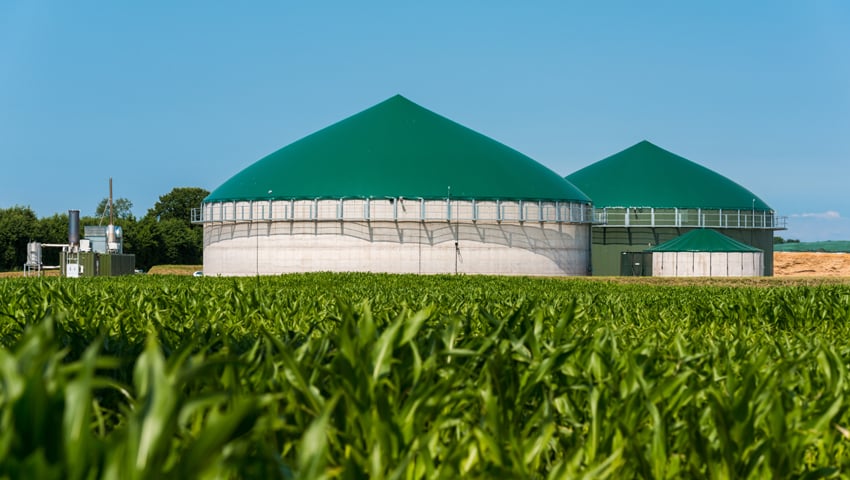UK farmers are recognising the benefits of slurry-based anaerobic digestion systems, but fundamental changes in policy, planning and funding are urgently required to encourage wider adoption of the technology. This was the conclusion of a recent summit looking at On-Farm Anaerobic Digestion (AD) and Methane Capture.
The event was hosted by Askham Bryan College, York and was convened by NNFCC, Biolectric and other suppliers.
It brought together around 100 farmers, policy-makers, funders and industry to discuss the opportunities for smaller-scale energy generation using on-farm slurry. It highlighted success stories of farms that were currently using the technology, including Askham Bryan’s own college farm.
In contrast to larger AD plants, small-scale on-farm anaerobic digestion (SOFAD) plants are solely fed by slurry from the animals on a farm, with no additional feedstocks. An estimated 90 million tonnes of livestock manure is annually available in the UK, but only 3 per cent is currently processed by AD – falling far behind other European countries. Although UK funders are willing to back smaller-scale anaerobic digestors, the lack of support and awareness at government level is stalling progress and imposing paperwork that is not scale appropriate.
Lucy Hopwood, Principal consultant at NNFCC said, “We have heard this week how SOFAD addresses so many areas such as methane capture, clean air and displacement of fossil-fuel fertilisers, as well as renewable energy, but there was frustration in the room about the multiple issues faced when trying to scale this technology.
“Legal, scoping and development costs are often inordinate in relation to the risks, as funders, planners and insurers follow criteria that is designed for much larger scale facilities. We heard of small AD plants being built in less than a week, but one taking 18 months to get through planning, even where there were no objections.”
“From a funding perspective, AD technology has not been included in any of the recent DEFRA productivity or slurry grants and we are also unclear as to what the future policy priorities are.
“While the systems can stack up for farmers without financial support, they will hold off if they are unsure whether this investment aligns with the policy priorities which may dictate what support is available in the future, so we need clarity to enable them to move forward. Wider recognition of the benefits and acknowledgement of their value, with tax breaks and carbon credits for this technology would also make investment more attractive, as would a planning and permit system that fully recognises the differences between small-scale and large-scale AD.
“It seems to be a topic that falls through the gaps between different government teams although we are hopeful that the new Circular Economy Taskforce, who were in attendance this week, might change this.”
Gary Hague, from Biolectric added, “All the farmers at the summit who have installed small-scale AD plants declared that the technology is a ‘no-brainer’ for their business and they would do it again. We need to give confidence to the wider farming community to adopt this technology and, in turn, create a more circular farming system that builds on-farm resilience and supports the net zero agenda.”
An evident sticking point is access to clear and accurate information to support early stage research and decision making, both for farmers and the wider community. NNFCC are working with the industry and local and national government, hoping to address this issue.
